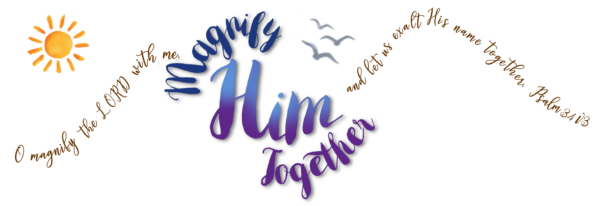“And he carried me away in the spirit to a great and high mountain, and shewed me that great city, the holy Jerusalem, descending out of heaven from God, Having the glory of God: and her light was like unto a stone most precious, even like a jasper stone, clear as crystal; And had a wall great and high, and had twelve gates, and at the gates twelve angels, and names written thereon, which are the names of the twelve tribes of the children of Israel…And the building of the wall of it was jasper: and the city was pure gold, like unto clear glass. And the foundations of the wall of the city were garnished with all manner of precious stones.”
(Revelation 21: 10-12, 18-19)

The purpose and intent of this section, “The Ring”, is to perhaps give some spiritual inspiration to a seemingly important aspect of engagement, marriage, etc. We do not find this element specifically in the scriptural narrative, so it seemed needful to either boycott the ring altogether, or dig for some spiritual value that can be found in that which is in the Bible. That being said, we do know of one example of jewelry being exchanged during an engagement, namely, Isaac & Rebekah; “And it came to pass, when he saw the earring and bracelets upon his sister’s hands…” (Genesis 24:30). “And the servant brought forth jewels of silver, and jewels of gold, and raiment, and gave them to Rebekah: he gave also to her brother and to her mother precious things.” (Genesis 24:53). And so with that in mind, we are going to look into some of the resources already available in the brotherhood & apply them to this aspect of marriage. We will look at the different gems & minerals in scripture, as well as what they might symbolize to use, the believer, as perhaps suggestions & insight as to which ring we might choose to be a “token” of our marriage covenants. We will begin our study in Revelation 21!
Revelation 21
The following is a chart originally found under “Charts and Tables” on Christadelphainvault.net, but it has been redesigned and modified to summarize the information found in the Revelation Green Expositor, The Miraculous Significance of Numbers & Colours, and Thirteen Lectures (all found below). The reading below is extensive, but so incredibly valuable. If you’re not up for the reading, that is okay. Enjoy the chart and some of the “gems” it brings forth from this wonderful section of Revelation 21, specifically verses 19-20. If you do choose to read the quotations found below, you will find that there are a few discrepancies between the writers, but that overall there is an agreement for that which the Spirit would have us understand.
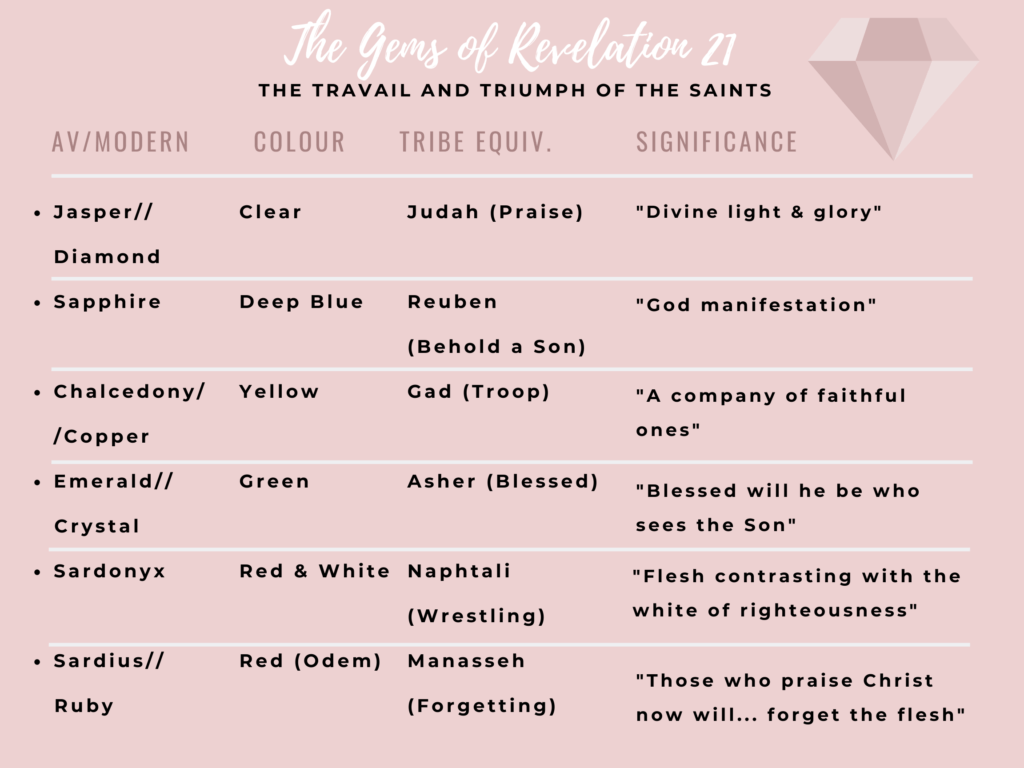
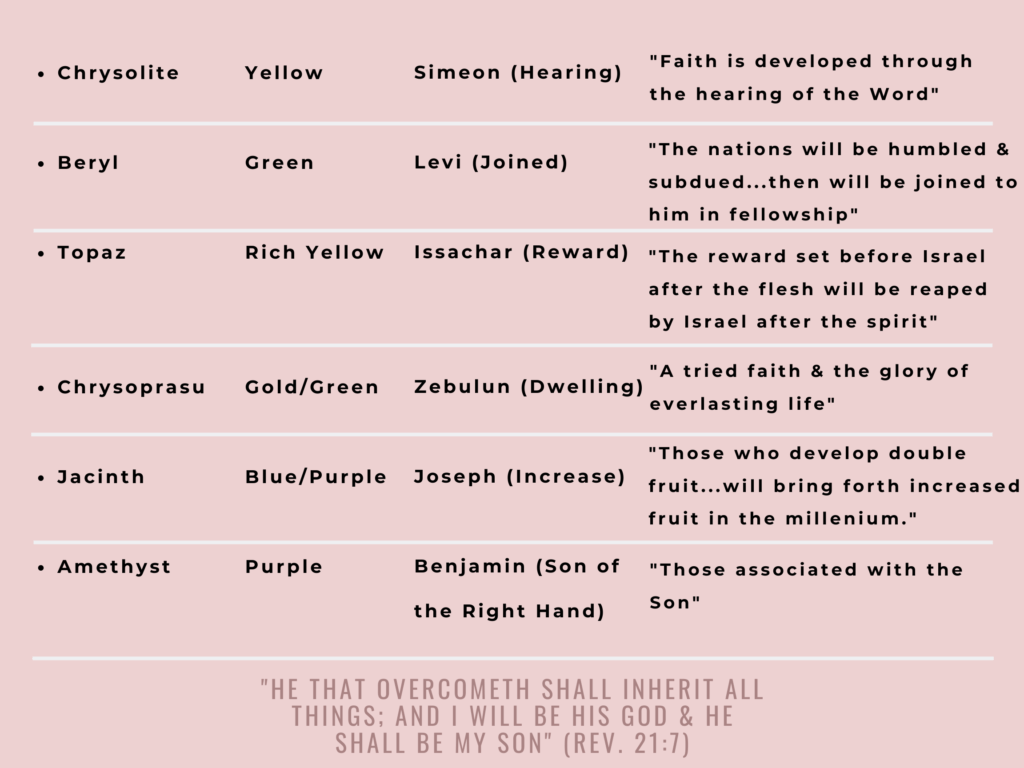
“The Foundations Of The Wall“—v.19-20 Twelve precious gems, garnished with other precious stones, form the foundations of the wall of separation. VERSE 19 “And the foundations of the wall of the city were garnished with all manner of precious stones”—As the foundations of the walls comprise twelve basic gems, representing the twelve Apostles, to “garnish” or decorate them with further “all manner of precious stones,” is to add to the seal ready established. This will be done in that all the Redeemed will find a place in the Lamb’s bride, the New Jerusalem. They are added because they have been brought to that state through the testimony of the Apostles (see John17:10; 1Cor.3:10; Eph.2:20), or, if they lived before the witnessing of such, because they were motivated by the same faith. They all comprise Yahweh’s special treasure in which He takes delight (Mal.3:17). Accordingly Paul wrote to the Thessalonian brethren: “For what is our hope, or joy, or crown of rejoicing? Are not even ye in the presence of our Lord Jesus Christ at his coming?” (1Thess.2:19). They will be as gems in Paul’s crown of rejoicing. The twelve foundations are identified with the twelve Apostles, because the doctrines they proclaimed involving the “things concerning the Kingdom of God and the name of Christ Jesus” (Acts8:12; Eph.2:20), form the basis of the New Jerusalem. In addition, they will be the Chapter Twenty-one rulers of regenerated Israel in the age to come (Matt.19:28). The twelve tribes are named in Rev.7, suggesting that the stones enumerated in the chapter before us can be identified with the tribes in the order of listing there. As the wall lies foresquare, and comprises twelve gems, the general shape and formation of the wall of the New Jerusalem answers to the Urim and Thummim of the High Priest’s breastplate (Exod.28:30). The Urim and Thummim represented the Lights and Fulnesses of the perfected Israel. In our opinion, the gems of the breast plate were set in order in such a way as to reproduce the encampment of Israel, leaving the square in the centre to represent the Tabernacle. This is strongly implied in that Moses was instructed to place the gems in the breastplate “according to the twelve tribes’ ^(Exod.28:21). This suggests the placing of them as the tribes were encamped around the Tabernacle. That, too, is the order of the gems surrounding the new Jerusalem, so that there is a link between the Tabernacle of the past, and the symbolic city of the future. The gems are not only identified with the Apostles, and they with the tribes over which they will rule, but their various colours will reproduce the sevenfold colours of the rainbow, the token of the covenant (Gen.9:15; see note Rev.4:3). When the sevenfold colours of the rainbow are combined they produce the white light of the sun (again cp.Matt.13:43), figurative of the light of righteousness. As the rainbow is the reflected multicoloured glory of the sun, so the gems represent various aspects of divine glory. The gems that form the foundation stones of the New Jerusalem must be cut, polished and engraved with the teaching of the Apostles (v.14). Concerning this, Brother Thomas writes in Eureka: “The principle consists in writing, stamping, impressing or engraving of the things designed upon the subject or material. The writer is the Spirit (Rev.4:5; 5:6) who engraves the graving thereof (Zech.3:9). The precious stones that form the building come out of the earth from whence all precious stones come, but they have to be cut, polished, embroidered and adorned to bring out the beauties by which they are susceptible. The resurrected bodies are raised to consubstantiality with Deity (Rev.3:12). Thus all the earthiness and corruptibleness of their grave-bodies is ‘swallowed up of life’. They lose their similitude to the nature of the ‘first Adam’, and acquire ‘the heavenly image’ of the Lord from heaven. Cp. Ps.101:8.
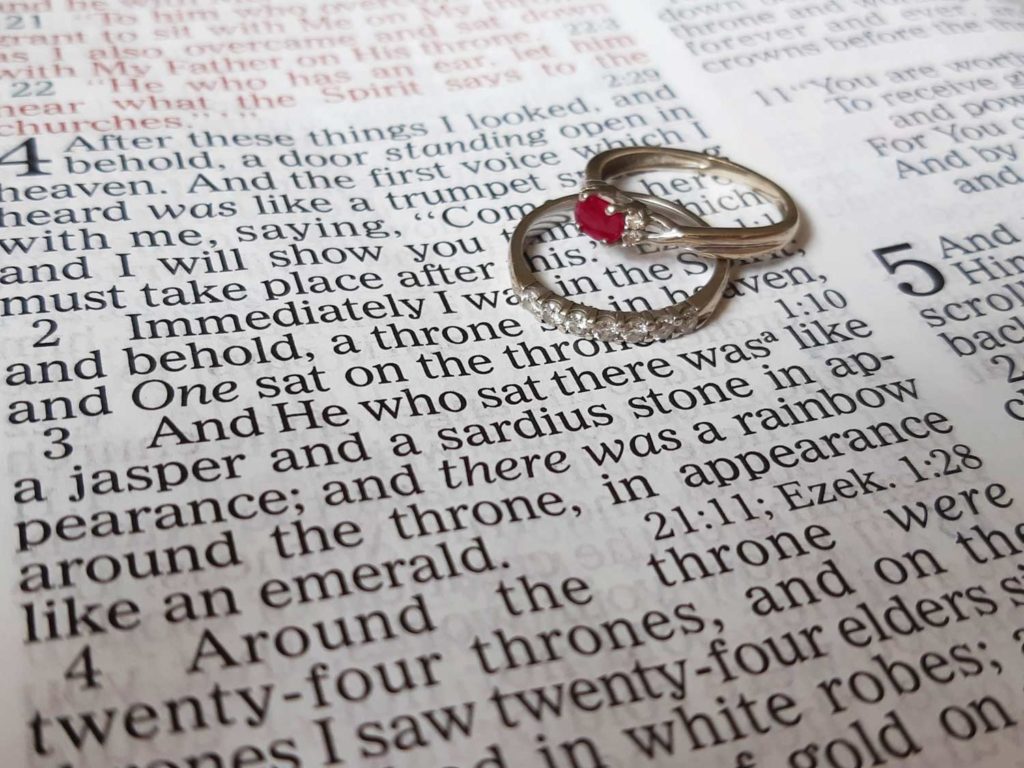
“The first foundation was jasper“—It symbolizes divine light and glory (v.11). In the breastplate it represented Napthali (Exod.28:20; Num.2:29) for the placing of the gems answers to the order of the tribes (cp.Num.2). In The Apocalypse, however, the gems correspond to the numeration of the tribes given in Revelation 7. A comparison of the two chapters, therefore, will show that the Jasper in the verse before us represents Judah, though under the Law the gem represented Naphtali signifies striving, whereas Judah signifies praise. The comparison suggests that when the new Jerusalem is revealed, there will be a change from. striving to praising.
“The second, sapphire“—The Hebrew sappeer signifies to scratch, polish, write, number. The sapphire is a deep blue in colour, suggesting the principle. of God manifestation (Num.15:38). The pavement under the feet of the Elohim as seen by Moses was of sapphire (Exod.24:10), as was also the throne of glory associated with the Cherubim (Ezek.1:26; 10:1). Both were visions of the glory of the coming Kingdom, the foundation and throne of which will manifest the divine glory in the earth. In the breast plate, the sapphire represented Simeon (Exod.28:18; Num.2:12); in Revelation it represents Reuben (cp.Rev.7:5). Simeon signifies hearing, Reuben signifies seeing. When the new Jerusalem is manifested in the earth, there will be a change from hearing to seeing.
“The third a chalcedony“— This gem is found in different colourings, among which is a golden yellow variety, speaking of faith. Reference to it is found only in Revelation, where it stands for Gad (Rev.7:5). Gad signifies a company i.e. of faithful ones. Through lack of faith Israel failed to obtain that which the elect has and will obtain (Rom.11:7)

“The fourth an emerald“— For the emerald, see our notes on Rev.4:3 (below). The emerald is a bright green gem. In the breastplate it stood for Reuben (Exod.28:18; Num.2:10), but in Revelation it represents Asher. Again, there is a transition. Reuben signifies See a son! Asher signifies blessed. Blessed will he be who sees the Son. The ”city lieth foresquare,” and its foundations were studded with gems like the breastplate of the High Priest. In the breastplate, the gems were set “according to the tribes of Israel,” which suggests the above (to the right) unconventional setting of the stones leaving the centre space to represent the Sanctuary in the Wilderness, or the New Jerusalem of the Apocalypse.
REVELATION 4:3—”And he that sat was to look upon like a jasper and a sardine stone”—This depicts Christ as “God manifest in flesh.” He is described as “the stone of Israel” (Gen.49:24; Isa.8:14; 28:16; 1Pet.2:4-9). His dual origin as both Son of God. and Son of Man is symbolized in the stones here referred to. Jasper symbolizes the Spirit. “A beautiful cerulean gem, clear as crystal, is the symbol of the Deity’s spirit condensed into substance” (Eureka). The light and glory of the heavenly Jerusalem is represented by a Jasper stone (Rev.21:11), the light of which is identified with the Lord Jesus (Rev.21:23). The Sardine stone is “a carnelian, and so called from its colour, having a resemblance to that of flesh” (Eureka). It symbolizes the fleshly descent of the Lord through his mother. This is shown by the name used to describe the gem. In Hebrew, the words sardine and Adam have the same consonants; and as, originally, Hebrew was written without vowel points, they then would have had identical appearance. “A Jasper and a Sardine Stone,” therefore, symbolizes the divine and human aspects of the Lord Jesus. Both stones were found in the breastplate of the high priest, and both are found in the jewels of the Apocalyptic Jerusalem. The Sardius was the first, and the Jasper the last, of the stones in Aaron’s breastplate (Exod.28:17,20), teaching that we begin with flesh, but can attain unto spirit. In that light, the application of these stones to the One upon the throne is most appropriate, because he is the Alpha and Omega, the First and the Last (Rev.1:8; 2:8). In Hebrew, “Sardius” is odem signifying redness; “Jasper” is Yashepheth signifying Yah polishes. Gesenius derives it from a root denoting smoothness. According to authorities, the Jasper can be of various colours including a “rich sky-blue” but the best gems are strictly opaque (Unger). Blue is the colour of heaven, and was used to teach the children of Israel the principles of God manifestation (Num.15:38; Deut.22:12). Under the Law, the Jasper represented Napthali (the last tribe in the order of march) whose name signifies wrestling and prevailing (Gen.30:8; 32:25,28). In The Apocalypse, however, the Jasper is the first stone (Rev.21:19), and so identified with Judah (Rev.7:5), whose name signifies praise. The combination suggests the thought that from wrestling and prevailing the redeemed will give themselves to praise (cp.Rev.5:5). Under the Law, the Sardius represented Judah, whereas in the New Jerusalem, it is the sixth stone, and represents the sixth tribe in the enumeration of Revelation 7, that is Manasseh (v.6). Thus praising will lead to forgetting (the meaning of Manasseh—see Rev.21:4). All is fulfilled in Christ Jesus upon the basis of God manifestation.
“The fifth, sardonyx“—According to Vincent the sardonyx is “the most beautiful and rarest variety of onyx. Pliny defines it as originally signifying a white mark in a sard (cornelian) like the human nail (onyx) placed in flesh, and both of them transparent. Onyx is so called from the resemblance of its white and yellow veins to the shades in the human fingernail.” Vine defines it as “a name which indicates the formation of the gem: a layer of sard, and a layer of onyx, marked by the red of the sard and the white of the onyx.” In The Apocalypse, the gem is related to Naphtali signifying to wrestle, i.e. with the hands, the red of flesh contrasting with the white of righteousness. The Hebrew word for onyx denotes a flashing forth of splendour. Those who successfully wrestle with the flesh will ultimately flash forth in splendour. The gem was not used in the breastplate.
“The sixth, sardius“—In Hebrew, the word for Sardius is odem, similar to Adam, and therefore relating to the flesh. It is reddish in colour. In the breastplate it stood for Judah (Exod.28:17; Num.2:3), whilst in The Apocalypse (Rev.7) it represents Manasseh. Judah signifies praise; Manasseh signifies forgetting. Those who praise Christ now will be given cause to forget the flesh in the future (Rev.21:4).
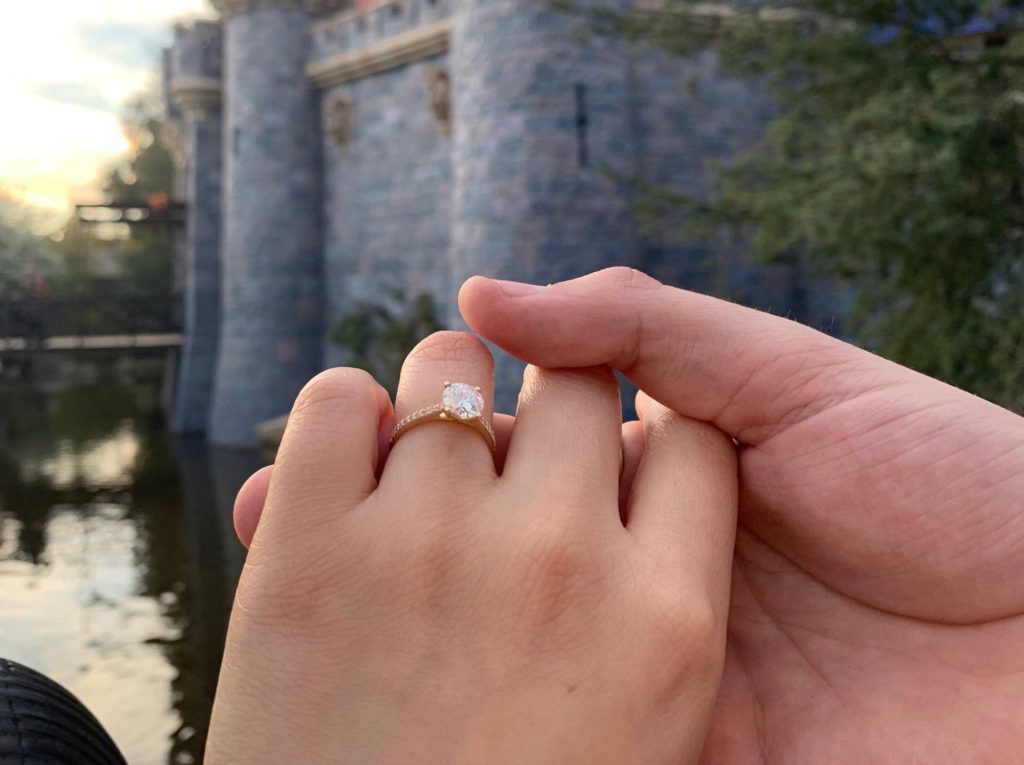
“The seventh, chrysolite“—The word itself means golden stone. It was applied to gems of a golden or yellow colour. It was not represented in the breast plate, but in The Apocalypse it stands for Simeon. Simeon signifies hearing which is appropriate to the gem, for faith (represented by gold—1Pet.1:7) is developed through hearing the Word of God (Rom.10:17).
“The eighth, beryl“—The Hebrew word for beryl is tharshish, and signifies to beat, subdue. The wheels of the Cherubim were of beryl, mighty in subduing the nations (Ezek.1:16;10:9). The body of the multitudinous Christ is “like a beryl” (Dan.10:6), for to him that overcometh, the Lord declared, “to him will I give power over the nations, and he shall rule them with a rod of iron; as the vessels of a potter shall they be broken to shivers…” (Rev.2:26-27). In the breastplate, the beryl stood for Dan; in The Apocalypse it stands for Levi. Dan means judge, Levi denotes joining. The nations will be humbled and subdued by the judgments of Christ, and then will be joined to him in fellowship.
“The ninth, a topaz“—The topaz is of various colours, though mainly of a rich yellow appearance. In both the breastplate and in The Apocalypse it represents lssachar, whose name means reward. The reward that was set before Israel after the flesh will be reaped by Israel after the spirit.
“The tenth, a chrysoprasus“—The word in the Greek is a combination of two words signifying gold and leek. Hence the chrysoprasus is described as a stone of greenish golden colour, like a leek: that is, apple-greenish in colour. It thus combines the symbolism of a tried faith (gold) and the glory of everlasting life suggested by the ever-living green colour (see note Rev.4:3). The stone stands for Zebulun whose name means dwelling. Saints of faith will certainly dwell in the new Jerusalem. 
“The eleventh, a jacinth“—The jacinth is the same word as hyacinth, and denotes a gem of a deep purple or reddish blue. Purple, as a colour, stands for God manifest in the flesh, being a combination of blue (cp.Num.15:38) and red the colour of flesh. In the breastplate it stood for Ephraim; in The Apocalypse it represents Joseph. Ephraim signifies double fruit, whilst Joseph signifies increaser. Those who develop double fruit (John15:16) will find an abiding place in the new Jerusalem, and will bring forth increased fruit in the millenium.
“The twelfth, an amethyst“—The amethyst is violet or purple in colour, again suggesting God manifest in the flesh (cp. Num.15:38 with Isa.1:18), and also the colour of royalty (Jud.8:26; John19:1-3). The word itself comes from a root signifying not intoxicated because this gem was supposed to be an antidote against drunkenness. In both the breastplate and in The Apocalypse it represents Benjamin whose name signifies Son of His Right Hand. Those associated with the Son will certainly find an antidote against the intoxicating doctrines of Babylon the Great, and will be incorporated into the new Jerusalem in due time. Speaking of the new Jerusalem, Isaiah declared: “I will lay thy stones with fair colours, and lay thy foundations with sapphires. And I will make thy windows of agates, and thy gates of carbuncles, and all thy borders of pleasant stones. And all thy children shall be taught of Yahweh, and great shall be the peace of thy children. In righteousness shalt thou be established” (Isa.54:11-14).
(HPM, The Revelation Expositor, Pg. 252-255)
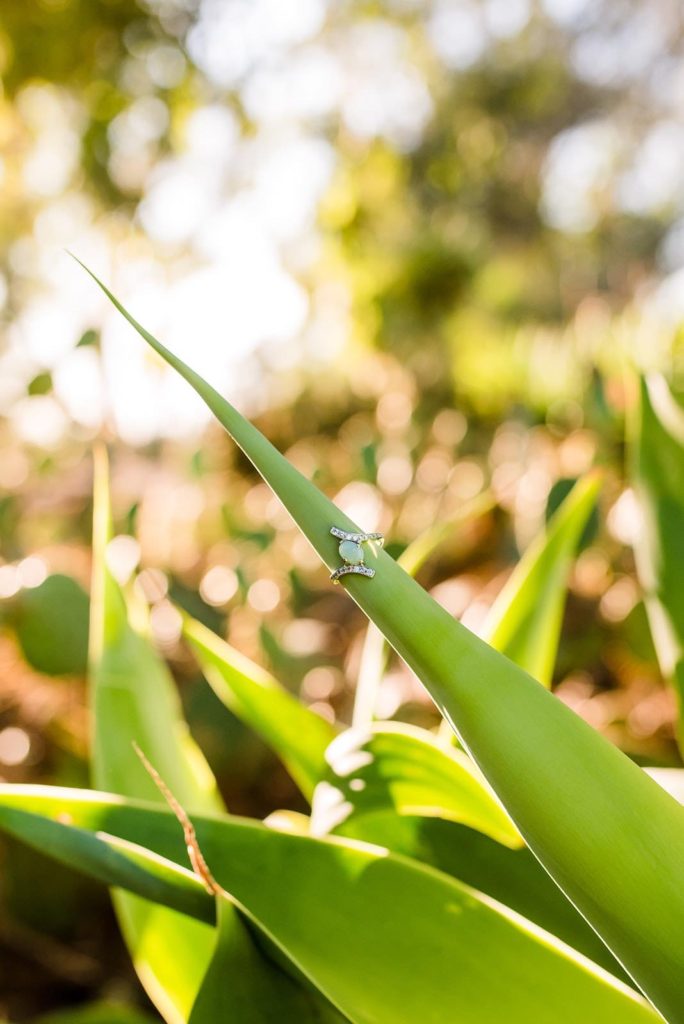
“For a moment let us go to Revelation 21. You will note how the stones are carefully outlined. Note again the corner stone in the old covenant or the breastplate, is the sardine or that of flesh. When we come to Rev. 21, we find twelve foundation stones in the New Jerusalem. The order of these has changed. Some have been eliminated and others have been added. Due to certain actions of the children of Israel of the various tribes, we do not find DAN in the stones of the New Jerusalem. DAN is eliminated and has been replaced by Levi. In Rev. 21, we find a distinct reversal of the corner stone. No longer is it a sardius, but now it becomes the jasper. Why? Because the New Jerusalem is the picture of immortality coming down from God out of heaven as a bride adorned for her husband. It is that “city which hath foundations, whose builder and maker is God” (Heb. 11:10). So the corner stone dates back to that spoken of by Peter when he says that we are lively stones built upon that chief corner stone into the temple of God (1 Pet. 2:5). It is that foundation stone spoken of in Eph. 2:20, where we are built into the temple of God, built upon that chief corner stone. Of course no one would doubt that chief corner stone is the Lord Jesus Christ. He is the rock of salvation. He is the rock that emanates from the very rock, the fortress, our fortress, Yahweh of Israel. He is that stone cut out of the mountain without hands spoken of in Dan. 2. It is interesting to look at that stone, it becomes a great mountain, it grows and fills the whole earth. One might say, “How does it grow”? How does any stone grow? How does a stone become a great building? Simply by adding building blocks to that stone. And we are those building blocks that are being molded today, far from the site of the temple. But when I Thess. 4 becomes a reality (as it will very shortly) the “dead in Christ shall rise first, then this mortal” (as we are told in I Cor.15) “will put on immortality, this corruptible will put on incorruption, then shall be brought to pass the saying that is written, death is swallowed up in victory.” What will happen? These stones, these lively stones that have been molded through trial (yellow), these that were once red but have now been immortalized and have become part of the jasper stone, they will become part of the immortal body of Christ. They will become the fulfillment of John 17 where Christ said, “that they might be one with me, even as I am one with thee”; and so it grows to a great mountain that fills the whole earth. This is the picture of the New Jerusalem. Who is the corner stone? Once a sardine stone, that is true, when he was bone of our bone and flesh of our flesh; but now by going through exactly the same process of the seven colors of the rainbow that we are going through, he has become immortal. He has become the jasper, and so this is held out to us in a glorious picture. The jasper stone, this is what we aspire to, but we know also that the only way that we can come to that perfection is through the various steps outlined in the seven colors of the rainbow. It was this finality that Ezekiel was permitted to see when he looked at the completed story in Ezekiel chapter one. If you will note carefully, we have the same color progression in Dan. 10, where Daniel sees the final image of the completed man molded together upon that chief corner stone which is the Lord Jesus Christ. The interesting thing of colour is this: that once all the primaries, the red, yellow and blue, and the offsprings of those colours are poured back together it becomes one great mass of white light from which it emanated. This was true in the beginning when God looked out upon His creation. He saw nothing but white light. He saw it and it was very good. The purpose of sending the Lord Jesus Christ, who once was represented by a sardine and now has become a jasper stone, the purpose of sending him into the earth has been to create a condition in which there will only be white light again; for we are told that when that great finality comes there will be no need for the sun or the moon or any other source of light, but the glory of God (white light) shall cover the earth as the waters cover the sea. So the eternal purpose of God will become a reality, when the desert shall blossom as the rose; when God shall be ALL in ALL: when Christ’s purpose will become a reality; when sin shall be dealt a fatal blow; no more red, no more yellow, only blue, only that which pertains to the Divine white light, the source of all color in the world as we see it today.”
(The Miraculous Significance of Numbers and Colours)

“The foundations of the city were garnished with all manner of precious stones.” If the foundation stones are the apostles, the precious stones with which they are set and sparkle must stand for those who have been brought to Christ through their word and work. Peter speaks of such as lively stones (that is, living, sparkling, lustrous stones, as contrasted with dull, dead, common stones) — “built up a spiritual house” (1 Peter 2:5). Paul also speaks of worthy saints as “gold, silver, and precious stones,” incorporate in the building which has Christ for its chief foundation. What this means in the literal is very attractive to consider. Paul takes us a step towards the literal understanding in speaking of the Thessalonians as “his glory and his joy” in the day of the Lord. He does the same in remarking that if any man’s work in Christ be destroyed — that is, if those whom he has brought to the truth are rejected — “he shall suffer loss” (1 Cor. 3:15). This hint suggests to the mind a beautiful organization of the body of Christ in the day of recompense. It will not simply be a multitude of saved men and women, but a multitude socially organized in a way that will reflect their history and secure for all the highest gratification that order is capable of yielding. We see it from the head to the foot. Christ is the author of all the salvation and the joy: in the kingdom he is the head, to whom every knee bows and every tongue confesses. The apostles were foremost in the mission and in the labours of the truth: they are the highest in the second grade of the kingdom, for they are the heads of the tribes of the house of Jacob in the day of restoration (Matt. 19:28). The earner of ten pounds has assigned to him ten cities: the earner of five, five cities (Luke 19:17-19). All and sundry are declared amenable to the rule that “he that soweth bountifully shall reap bountifully”, and vice versa (2 Cor. 9:6), that “Christ will reward every man according to his works” (Matt. 16:27). Consequently “they that turn many to righteousness” shall specially shine in the kingdom (Dan. 12:3). What this involves as regards the actual arrangements of the kingdom is hinted at in the clustered gems that bedeck the twelve foundations of the New Jerusalem. Those who bring men and women to the truth and help to keep them there, may find that these will be given to them in the kingdom in a special way, while they themselves will belong to those above them, to whose instrumentality they may owe their own standing in the One Body. All will reign: all will exercise authority, but in various positions and relations and in different degrees of glory and honour. The lowest will not envy the highest, but will find themselves exactly suited to the places assigned to them; and the highest will not exercise their power with arrogance, but will exhibit the pure and loving condescension of the highest of them all, who humbled himself even unto death. There will be no schism in the body of Christ. It will be an absolute unity, like the human body to which it is compared, yet exhibiting the diversity of organization and function which is the highest glory of that wonderful work of God.
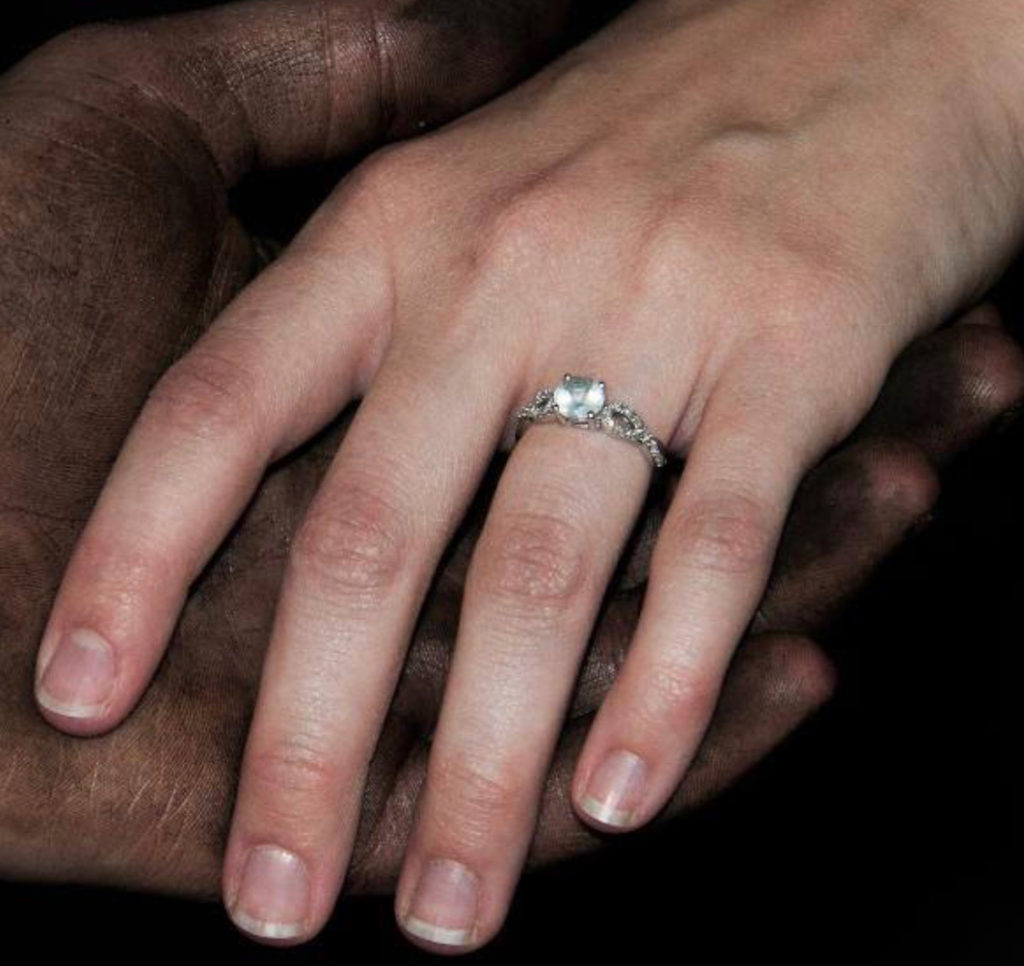
The twelve foundations had not only each a different name, but each was of a different material. “The first foundation was jasper (BRIGHT GREEN); the second, sapphire (BLUE); the third, a chalcedony (DEEP RED); the fourth, an emerald (GREEN); the fifth, sardonyx (LIGHT PINK); the sixth, sardius (FLESH COLOUR); the seventh, chrysolite (YELLOWISH DULL GREEN); the eighth, beryl (SEA GREEN); the ninth, a topaz (YELLOW); the tenth, a chrysoprasus (GOLDEN GREEN); the eleventh, jacinth (ORANGE); the twelfth, an amethyst (VIOLET).” Whether there will prove to be any exactness of correspondence between the nature of these precious stones and the apostles they represent, we cannot know beforehand; but it must be manifest that one thing is distinctly signified by this classification, and that is that diversity of excellence will characterize the spirit state. The saints will not be all to one pattern. They will be all of a sort in one way. They will all be precious stones: but each with a preciousness of his own which gains by comparison with the preciousness of his neighbour. We see the principle faintly at work now. Brethren, resembling each other closely in their love of God and their affection for all spiritual things, and their fruitfulness in every good word and work, may yet differ entirely in their intellectual and moral characteristics. The difference, so far from being a defect, is an excellence, giving zest to their intercourse and their love one for another. We shall see this law in perfection in the supernal state to which the truth in its obedience will finally introduce men and women who please God through Christ. One other idea is suggested by the employment of precious stones to represent the saints. Precious stones owe their beauty to the light. In the absence of light they are dark; let the light come and they glow in all the dazzling and many-coloured refractions that give them their preciousness. The counterpart will be recognized in the relation of Christ as the sun to the precious stones, his brethren. Apart from him, they can do nothing and are nothing. “The head of every man (of them) is Christ, and the head of Christ is God.” This is true both now and hereafter. At the same time, there must be fitness in themselves to reflect the light. The brightest sunshine falling on brick produces no beauty; it only reveals the deformity of fire-baked stuff. There must be a nature in the stones suitable to the light. There must be-good soil before the seed will germinate. There must be the honest and good heart before the fruit of the spirit will come forth. This is a matter of original bestowal to some extent, but the education of the truth, ministered by the word of God as contained in the holy oracles committed to Israel, has a wonderful power to change the old inferior man into a new man, created after the image of the firstborn — the Lord Jesus.”
(Thirteen Lectures of the Apocalypse, pages 215-216)
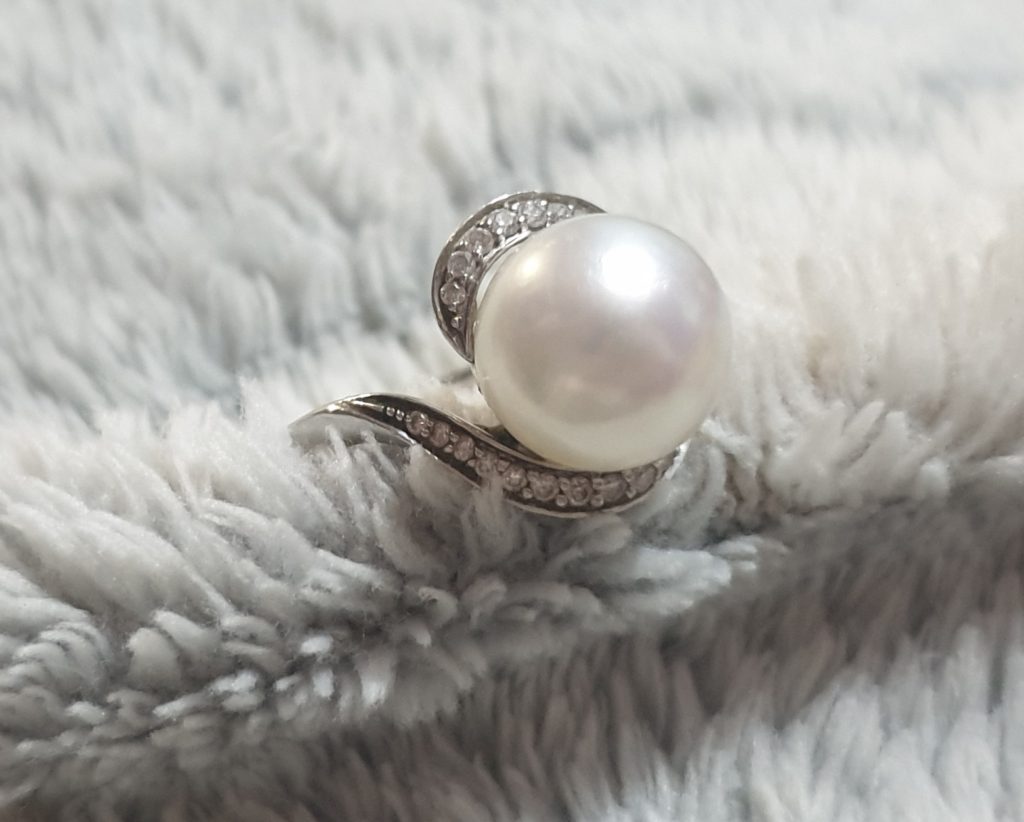
The Pearl
The pearl is a wonderful symbol for the Redeemed. Pearls are found in the depths of the ocean, hidden away from human sight until brought into view. The Redeemed, in the days of their flesh, are also hidden away in the depths of the sea of nations (Isa.57:20). Pearls are formed in the oyster by a grain of sand acting as an irritant, and so forming a nucleus. The oyster coats it with a nacreous substance which hardens to form the coating of the pearl. So it is “through much tribulation” that there deemed develop characters fit for the Kingdom of God (Acts14:22). But the pearl must be brought to the light before its full beauty will be revealed. Its outer coating must be peeled away, and its full lustre revealed by the light of the sun. In the antitype, the Redeemed must shed their coats of flesh, and be clothed with divine nature, thereby shining forth with the reflected light of the Sun of righteousness (2 Cor.5:2-4; Mal.4:2; 2 Thess.1:10). A pearl, therefore, is developed out of trouble, through successfully coping with the irritants of life. How appropriate is the symbol to those who embrace the truth. Yet only when the Light of the world (John8:12) is again manifested in the earth will the true beauty of these “pearls” shine forth.
(HPM, The Revelation Expositor Pg.255-256)
We pray that as you consider this wondrous adventure ahead, even marriage, that you might bare in mind the awe inspiring principles & words of our all knowing & all providing God.
“His will is best, there let us rest” -Sister Jane Roberts in The Virtuous Woman
If you have any resources related to this post, or any of the content ahead (please see the table of contents) we would love to hear from you!
